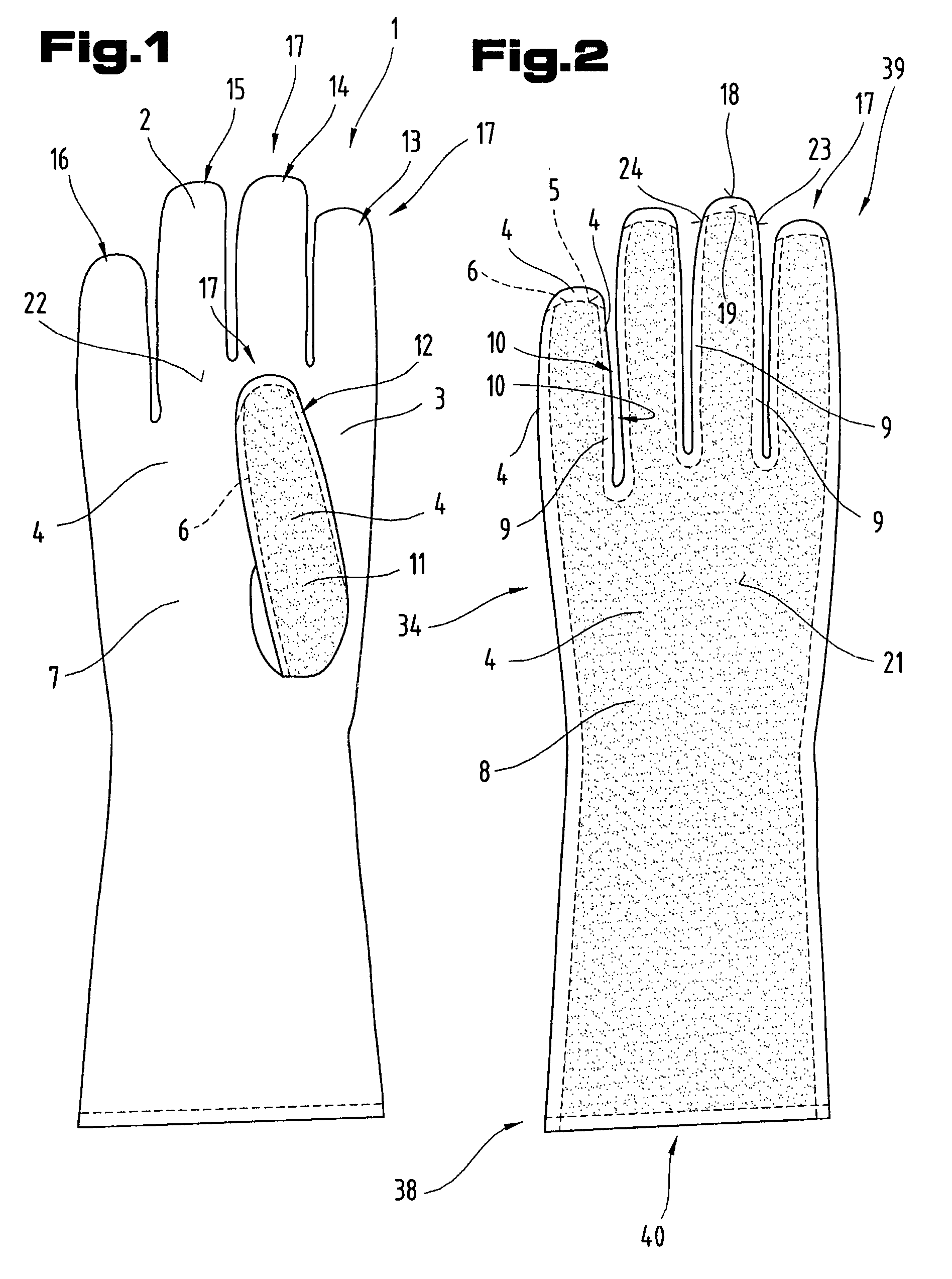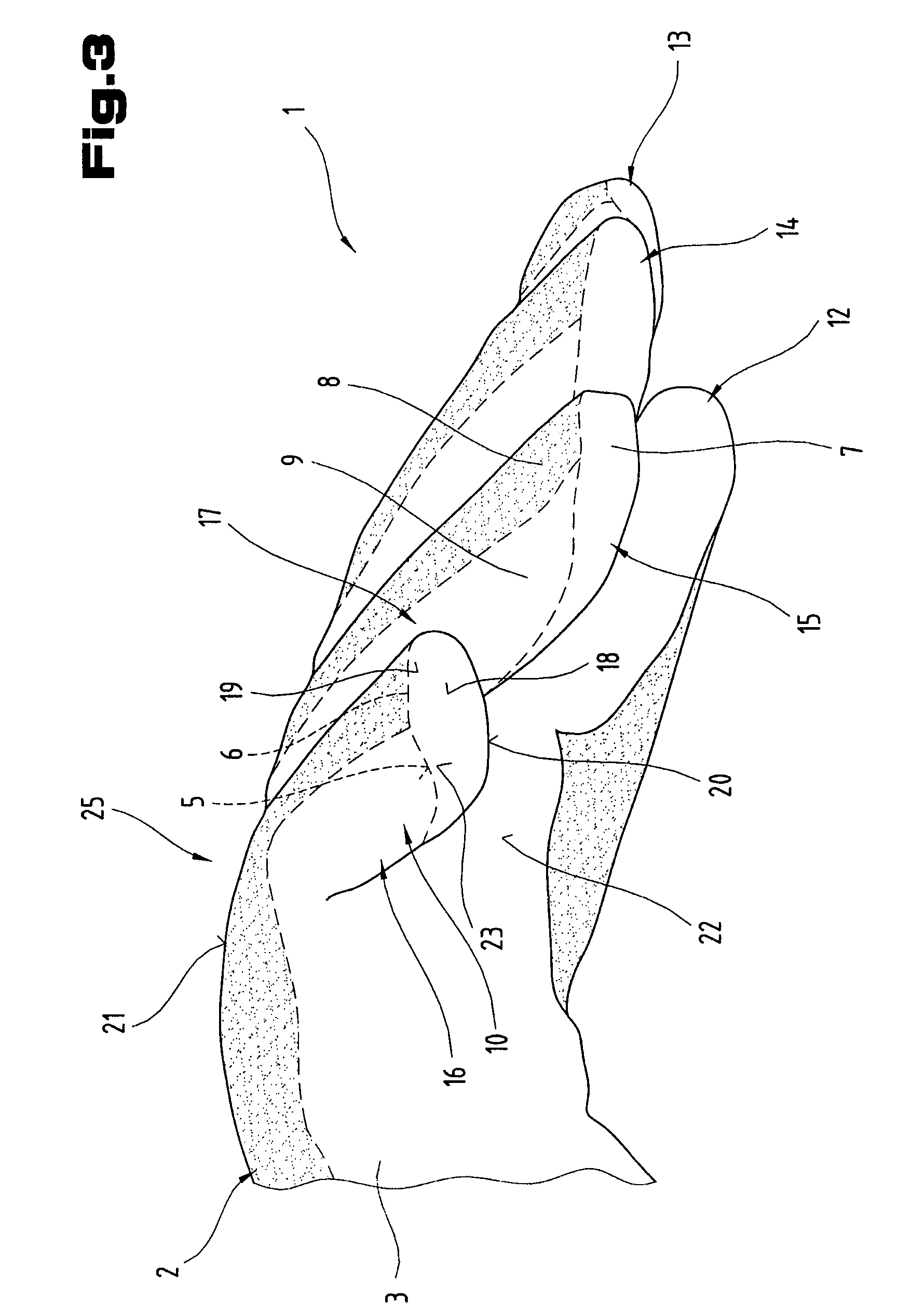Glove and lining for a piece of equipment
a technology of gloves and equipment, applied in the field of gloves, can solve the problems of short service life of gloves, adversely limited touch sensation in the region of the fingers of users' hands, and a lot of complex work involved in joining the two material blanks to one another, so as to reduce the complex processing involved in producing gloves, improve the resistance and tactile properties, and improve the effect of resistance to external influences and stress
- Summary
- Abstract
- Description
- Claims
- Application Information
AI Technical Summary
Benefits of technology
Problems solved by technology
Method used
Image
Examples
Embodiment Construction
[0038]Firstly, it should be pointed out that the disclosures made throughout the description can be transposed in terms of meaning to same parts bearing the same reference numbers or same component names. Furthermore, the positions chosen for the purposes of the description, such as top, bottom, side, etc,. relate to the drawing specifically being described and can be transposed in terms of meaning to a new position when another position is being described. Individual features or combinations of features from the different embodiments illustrated and described may be construed as independent inventive solutions or solutions proposed by the invention in their own right.
[0039]FIGS. 1 to 3 illustrate one possible embodiment of a glove 1 proposed by the invention. In the embodiment illustrated as an example, the glove 1 is of the type with five fingers, although it would also be possible to opt for a design with three fingers or a mitten format. The glove 1 has a lining which may compri...
PUM
 Login to View More
Login to View More Abstract
Description
Claims
Application Information
 Login to View More
Login to View More - R&D
- Intellectual Property
- Life Sciences
- Materials
- Tech Scout
- Unparalleled Data Quality
- Higher Quality Content
- 60% Fewer Hallucinations
Browse by: Latest US Patents, China's latest patents, Technical Efficacy Thesaurus, Application Domain, Technology Topic, Popular Technical Reports.
© 2025 PatSnap. All rights reserved.Legal|Privacy policy|Modern Slavery Act Transparency Statement|Sitemap|About US| Contact US: help@patsnap.com



